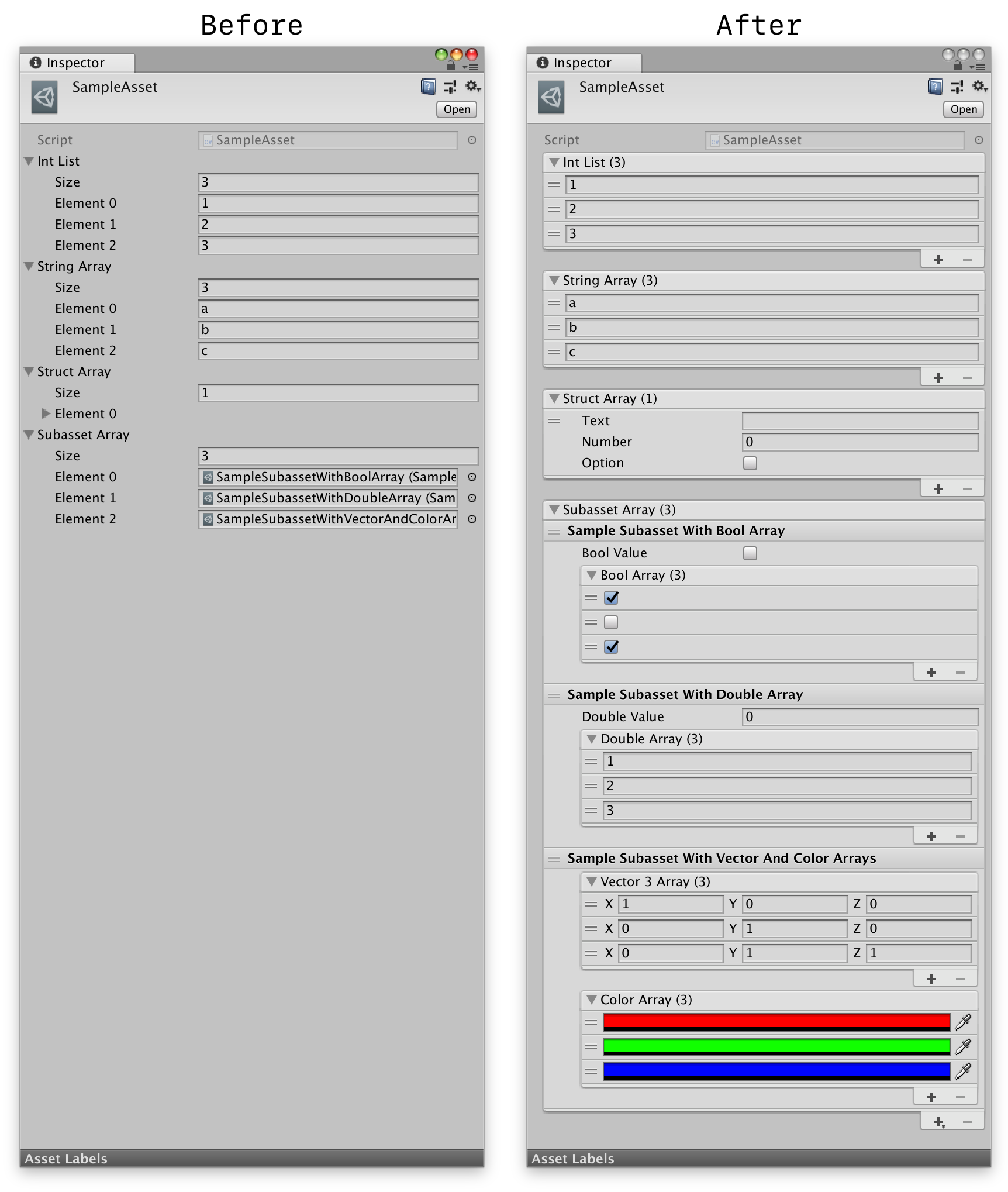Add an entry to your project's Packages/manifest.json dependencies list using the package name "com.garettbass.unityextensions.arraydrawer"; e.g.:
{
"dependencies": {
"com.garettbass.unityextensions.arraydrawer": "https://github.com/garettbass/UnityExtensions.ArrayDrawer.git"
}
}Alternatively, clone the project somewhere on your machine and add it as a local package.
Just clone this repo somewhere inside your Unity project's Assets or Packages folders.
To customize the editing experience for a member variable, you can implement a property drawer class that derives from the UnityEditor.PropertyDrawer base class. However, when a property drawer is specified for an array or list, Unity associates that property drawer with the elements of the array or list, not the array or list itself.
I created the UnityExtensions.ArrayDrawer base class to enable the creation of property drawers that customize the editing experience for arrays and lists. The provided ReorderableListDrawer derives from ArrayDrawer to do its business, but you can just as easily implement other sorts of array and list UI customizations. For example, in one project where I use this library, I have implemented EnumeratedArrayDrawer which provides a named array element for each value of the provided enum type.
As an example ArrayDrawer-derived property drawer, this library provides ReorderableListDrawer, which presents an array or list using Unity's ReorderableList UI element, providing a much better default editing experience for arrays and lists. Additionally, the ReorderableListDrawer supports the use case where the elements of an array should be subassets of the same Unity asset. You can enable this feature by attaching the ReorderableListAttribute to the array or list in your ScriptableObject. The class shown in the screenshot above uses this feature for the SampleAsset.subassetArray member variable:
public class SampleAsset : ScriptableObject
{
/* other fields ... */
// show `subassetArray` elements directly in the inspector,
// and save them to the same *.asset file
[ReorderableList(elementsAreSubassets: true)]
public SampleSubasset[] subassetArray;
}The ReorderableListDrawerAttribute can be attached to an array or list member variable to configure the behavior of the ReorderableListDrawer. It provides the following configuration options:
-
bool disableAdding- Disables the+button in theReorderableListUI -
bool disableRemoving- Disables the-button in theReorderableListUI -
bool disableAddingAndRemoving- A shortcut to diable both adding and removing -
bool disableDragging- Prevents the user from reordering array elements by drag & drop -
bool elementsAreSubassets- Directs theReorderableListDrawerto embed array elements that derive fromScriptableObjectinto the same Unity.assetfile that contains the array or list, and to also show their member variables in the array, instead of the default object picker UI normally shown for aScriptableObject. This is especially useful for arrays of polymorphic types, since Unity only supports polymorphism for classes that derive fromScriptableObject.
This class attempts to attach the ReorderableListDrawer as the default property drawer for all arrays and lists for which no other property drawer is provided. As a result, all of your arrays and lists that would normally receive the default UI treatment (seen on the left in the screenshot above) will instead receive the ReorderableListDrawer UI.
